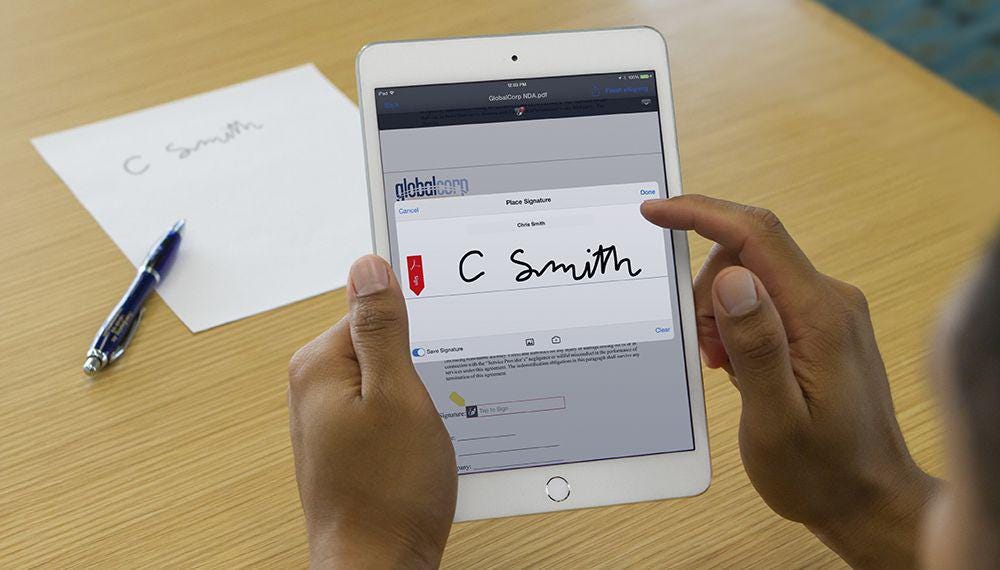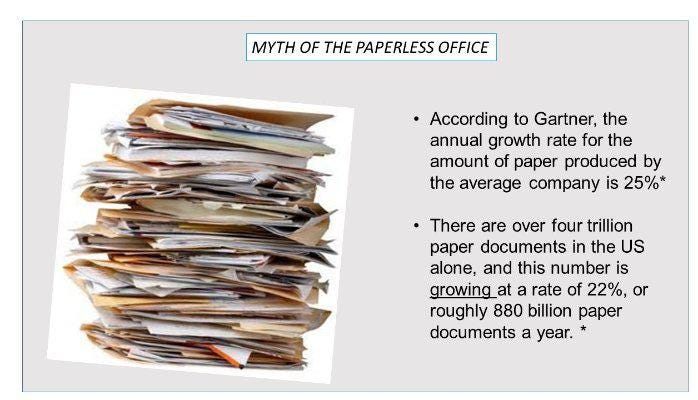 Optical Character Recognition (OCR) is one of the few technologies that has found applications throughout the entire industrial spectrum, where the immediate saving of labour. (otherwise lost in onerous retyping of handwritten or typewritten data) is realised. With OCR, a huge number of paper-based documents, across multiple languages and formats can be digitised into machine-readable text, that not only makes storage easier (saving a bomb on space, fireproofing, pest-control etc), but also makes previously inaccessible data available to anyone at a click.
Optical Character Recognition (OCR) is one of the few technologies that has found applications throughout the entire industrial spectrum, where the immediate saving of labour. (otherwise lost in onerous retyping of handwritten or typewritten data) is realised. With OCR, a huge number of paper-based documents, across multiple languages and formats can be digitised into machine-readable text, that not only makes storage easier (saving a bomb on space, fireproofing, pest-control etc), but also makes previously inaccessible data available to anyone at a click.
Banking
The Banking industry, along with other finance sector industries like insurance and securities, is a major consumer of OCR. The most frequent use of OCR is to handle cheques: a handwritten cheque is scanned, its contents converted into digital text, the signature verified and the cheque cleared in real time, all with human involvement. While near 100% accuracy has been achieved for printed cheques (with only the signature verification requiring a match against a pre-existing database), it is still a long way off for complete autonomy for handwritten cheques. Nevertheless, with deep learning AI techniques applied to handwriting OCR, this problem is not as unsurmountable as it might seem. A reduced turnaround time for cheque clearance is an economic gain for all, from payer to bank to payee.
Legal
Few industries generate as much paperwork as the legal industry, and so OCR has multiple applications herein. Reams and reams of affidavits, judgements, filings, statements, wills and other legal documents, especially the printed ones, can be digitised, stored, databased and made searchable using the simplest of OCR readers. With OCR technology extending to languages not using the Roman script, this brings into the digital world documents in Chinese, Arabic and other scripts, too. For an industry heavily reliant on judicial precedent, fast access to legal documents from millions of past cases is surely a place.
Healthcare
This is another industry that does well with OCR. Having one’s entire medical history on a searchable, digital store means that things like past illnesses and treatments, diagnostic tests, hospital records, insurance payments etc can be made available in one unified place, rather than having to maintain unwieldy files of reports, X-rays and other papers. Having a hospital’s entire record stored digitally is also a big boost to epidemiology (prevalence of diseases) as well as logistics (maintaining suitable stores of drugs, equipment and other consumables). Not to mention, such records summed over multiple hospitals in a region provide a huge database for data-based healthcare policy, legislation and supplies.
Benefits of OCR
Searchability
Once your scanned file has been converted to machine-readable text, you can save it in a formatsuch as .doc, .rtf, .txt (simplest), .pdf etc. These files are internally searchable using Ctrl+F in Windows (Command+F in Mac). By uploading them to a suitable database, like Google Drive (for your private use) or Archive.org (accessible to anyone), you make these documents available globally.
Editability
You might want to make amends to an old term paper you wrote, or revise an old will. Once your document is digitised with OCR, this is easily done using a word processor, rather than have to type the whole document again.
Accessibility
Once a document is scanned by OCR and made available on a common database, it is available to anyone with access to that database. This is particularly useful for banks for example, which can access a customer’s past cheques anytime, anywhere to investigate their credit history. Another immediately obvious application is in making government archives available, so you can find your land ownership record or your grandfather’s birth certificate from anywhere.
Storability
Digitising documents reduces the storage space required for the same information from a few cubic inches to so many bytes on a server, potentially freeing up space for more productive use (such as seating the employee tasked with OCR). Also, the paper now rendered unnecessary can be recycled, reducing the demand (and thus expense) for fresh paper.
Backups
Digital back-ups can be done cheaply, and potentially, an infinite number of times; instead of maintaining costly duplicates and triplicates in paper form. Combined with the above, OCR renders paperwork a lot more sustainable.
Translatability
Today’s OCR can handle a huge variety of scripts, from Arabic to Indian scripts to Japanese kanji. Coupled with the Unicode standard and mchine translation software (such as Google Translate), this means that a document in one language can be scanned, digitised and translated into any other language, eliminating the need for human translators to go through printed documents painstakingly. This in turn reduces turnaround time for business.
How will OCR help my business?
OCR as a step towards digitisation, has a number of bioth immediate and long-term benefits. Here are three, which can impact your business and lead to a tidy sum in savings:
Get the best deal for your business
A very large amount of data still exists in paper form, whether it is contracts; legalese; shipping waybills; government forms, permits and certificates; tariff and rate cards of all kinds; tax tables; calendars; catalogues; and a many more. Once digitised, you can compare them against various other digital (and digitised) documents, enabling you to get the best prices, services, terms, etc.
Audit and manage mismatches
Not being supplied correctly? Something amiss in a service provided to you? With your signed contract digitised using OCR, you can cross check for deviations from the original terms. Similarly, cheques can be checked for the correct amount, invoices compared etc.
Enable analytics and other data processing
Once you have things like bills of landing, invoices, tax receipts, orders etc. digitised, you make these available for most spohisticated analysis, that can tell of long-term trends in your business. You can spot loss leaders, over (or under invoicing), tax evasion or overpayment and a lot more, that enable a significant savings in cost. These are really the benefits of going fully digital, but OCR is a critical first step in converting analogue documentation.
What else can OCR do?
The applications of OCR go way beyond digitisation of documents. Combined with the power of big data, artificial intelligence and low-cost internet, OCR brings the digital revolution to many who have not enjoyed its fruit so far.
Digital Libraries
Huge amounts of knowledge useful to humanity like gathering dust on bookshelves, in public and university libraries around the world. Scanning these books and converting them to digital files would potentially open the knowledge in them to anyone with a computer or a mobile phone. Indeed, such a project was conceived of by Google Books, and executed to some extent, before being shutdown by US courts over copyright worries by authors and publishers. Nevertheless, a large number of out-of-copyright books, especially rare ones have now been made available online through such public repositories as Archive.org or Academia.edu.
Not only do these repositories make it easier for referencing work in research, but they have helped in developing teaching aids and interdisciplinary studies.
Optical Music Recognition
This is basically OCR applied to musical notation. By scanning sheet music, not only are the notations available digitally, but they can also be converted by specialist applications into sound, thus allowing your computer or smartphone to read a music sheet and play the music written on it!
References
OCR Applications: http://www.cvisiontech.com
Practical Applications of OCR Technology that make Business Easier Posted by Matthew Cook on 19 August 2015 https://blog.omprompt.com
Five uses for an OCR reader you haven’t thought of https://www.neat.com
Raamesh Gowri Raghavan is collaborating with Dr. Sukant Khurana on various projects, ranging from popular writing of AI, influence of technology on art, and mental health awareness.
Mr. Raamesh Gowri Raghavan is an award winning poet, a well-known advertising professional, historian, and a researcher exploring the interface of science and art. He is also championing a massive anti-depression and suicide prevention effort with Dr. Khurana and Farooq Ali Khan.
You can know more about Raamesh at:
https://sites.google.com/view/raameshgowriraghavan/home and https://www.linkedin.com/in/raameshgowriraghavan/?ppe=1
Mr. Prashant Manoharrao Kakde lives in Yavatmal, Maharashtra and is a prolific researcher in the fields of artificial Intelligence, digital image processing, digital instrumentation, and biomedical engineering. He is currently an assistant professor at H.V.P.M’S C.O.E.T, Amravati. He is working under the guidance of Dr. Khurana in making a OCR which can recognize all world’s languages with high accuracy.
Dr. Sukant Khurana runs an academic research lab and several tech companies. He is also a known artist, author, and speaker. You can learn more about Sukant at www.brainnart.com or www.dataisnotjustdata.com and if you wish to work on biomedical research, neuroscience, sustainable development, artificial intelligence or data science projects for public good, you can contact him at skgroup.iiserk@gmail.com or by reaching out to him on linkedin https://www.linkedin.com/in/sukant-khurana-755a2343/.
Here are two small documentaries on Sukant and a TEDx video on his citizen science effort.
 Source:
Source:
No comments:
Post a Comment